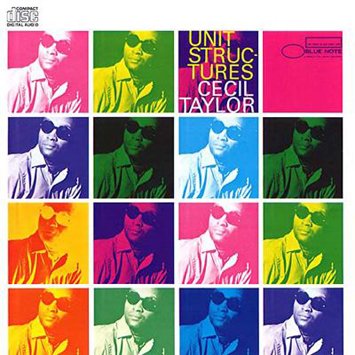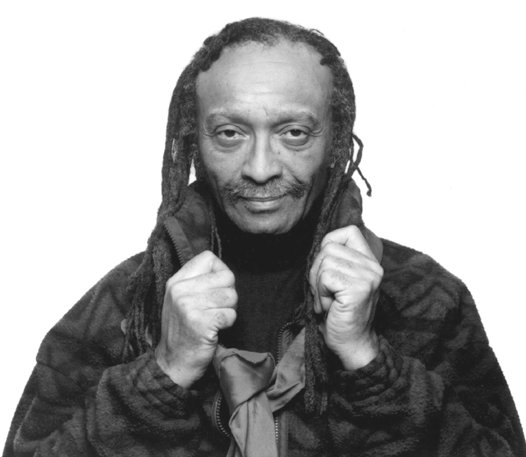Jimmy Lyons (alto sax), Ken McIntire (alto sax, oboe, bass clarinet), Eddie Gale (trumpet), Cecil Taylor (piano, bells), Henry Grimes and Alan Silva (bass) and Andrew Cyrille (drums). From the album Unit Structures (1966).
Shortly after his first appearance in the mid-1950s, pianist Cecil Taylor was regarded as one of the most radical avant-garde jazz improvisers. Several years before the appearance of free jazz he already used dissonances, fragmented lines with a single note, unconnected rhythms and an intense approach of atonal percussion involved playing the piano as if it were a drum set. Normally he highlighted dense groups of sound performed with outstanding technique and resistance. Taylor started playing the piano at age 6, studied in New York, his hometown, and in Boston, and his first gigs were with Hot Lips Page and Johnny Hodges.

Album cover
In 1956 he returned to New York, formed a quartet and recorded Jazz Advance, which looks like a conventional jazz album, but whose music is subversive. During the second half of the 1950s and the 1960s, his music became more challenging and he moved away from existing jazz styles. Concerts were hard to come by and clubs didn’t hire him because their long pieces were harmful to their business. In 1959 he recorded the album Looking Ahead! showing his originality as a creator compared to the mainstream jazz scene and using masterful techniques and fast stylistic changes from phrase to phrase.

Cecil Taylor
In the introduction, Lyons and McIntire have a deaf dialogue while the rest of the group plays freely. At a certain point, Lyons and McIntire expose the theme playing a strange melody in unison. The first one to present his solo is Lyons with very swift and continuous phrases with no rhythmic or harmonic pattern. Meanwhile, Taylor randomly plays the piano keys without creating phrases and Cyrille hits the drums out of order. McIntire follows him with a very similar discourse spontaneously playing melodic lines without meaning that he interprets leaving his imagination free. The next to intervene is Cyrille, who stays in duet with Taylor establishing a strong connection between them. Then Grimes joins in playing the double bass with the bow or with pizzicato and Taylor strikes the piano in a chaotic way without a break. Then Lyons outlines a couple of sentences and Cyrille ends the composition.


$upvote YOUR-POST-LINKand you will receive upvote on your post.Downvoting a post can decrease pending rewards and make it less visible. Common reasons:
Submit